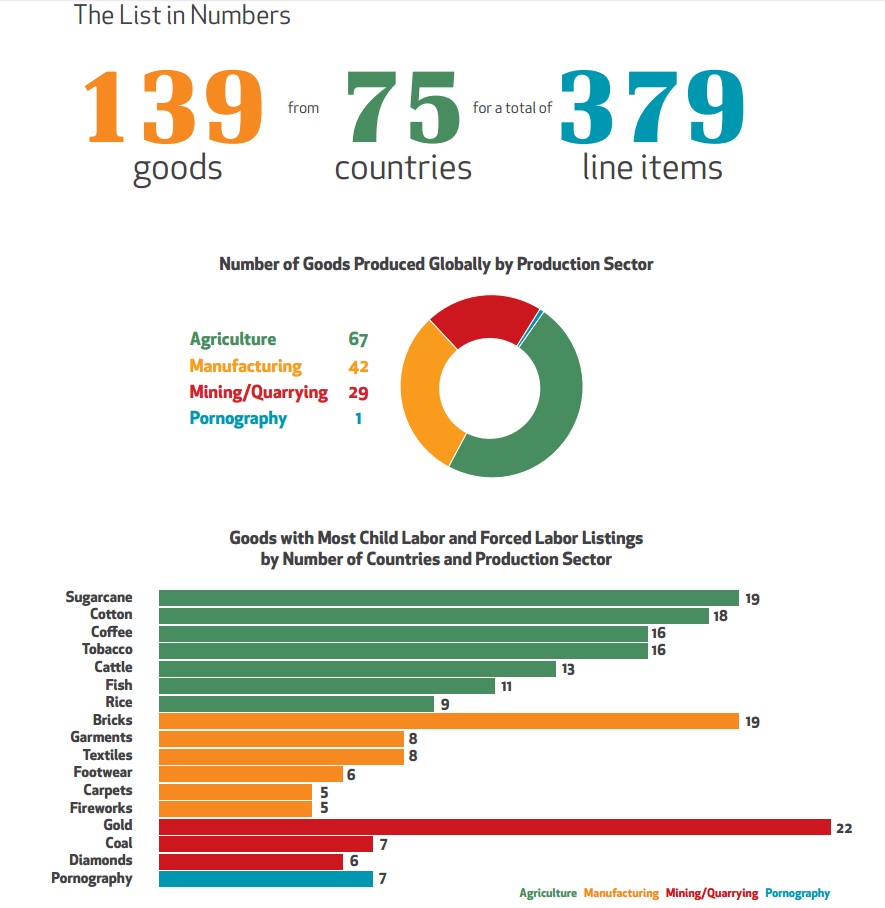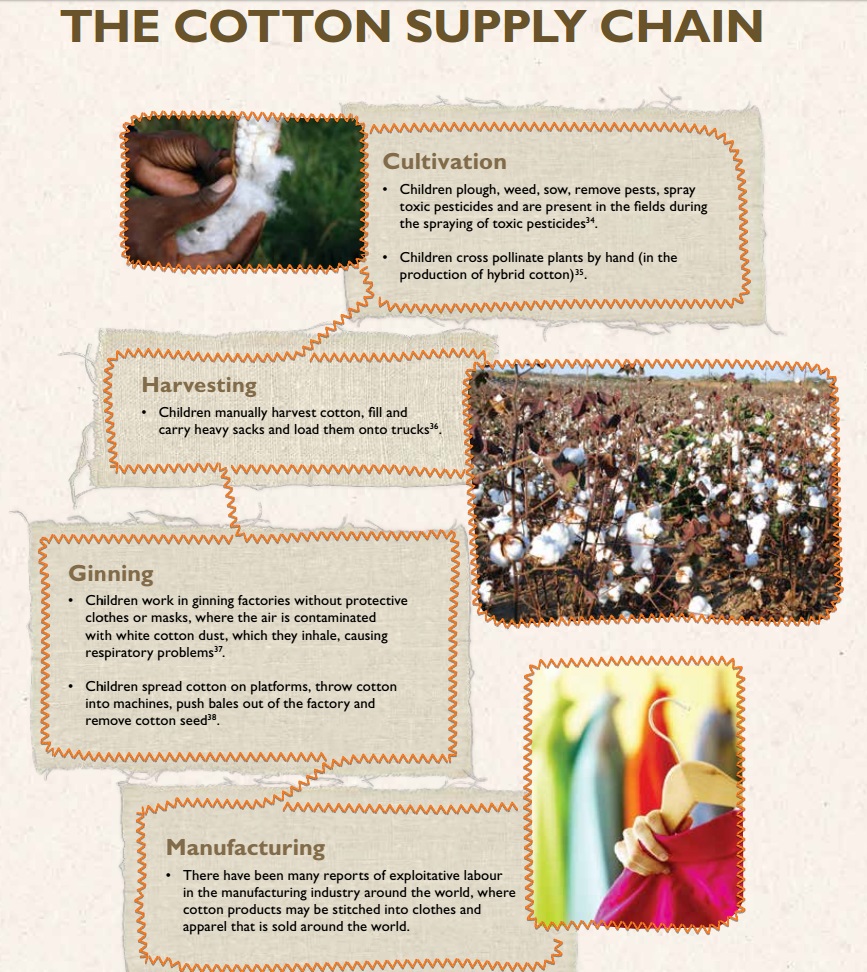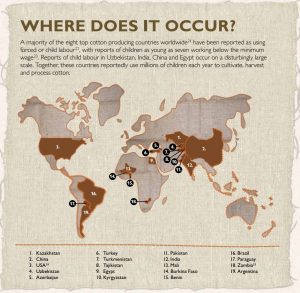THE FORGOTTEN. Children from poor countries, slaves in textile factories to temper the insatiable appetite of fast fashion consumers from the West
While most of the children spend their days surrounded by a loving family, playing outside with their friends and going to school, let’s not forget about the other children that are not that fortunate. THE FORGOTTEN: children exposed to poverty and famine, forced labour, violence or suffering in the war zones.
EvoNews will publish a series of articles which aim to bring awareness to these serious issues and inspire people to take action to improve the worrisome situation of millions of children that are struggling instead of living their childhood without a care in the world.
The crazy craving for changing the wardrobe from one season to another or even from a month to another built empires, but also an entire work infrastructure in poor countries which involves many children of very young ages, who end up being slaves in textile factories.
Around the world there are, despite a downward global trend, approximately 168 million child workers, with more than half of them working in what’s officially classified as “hazardous labour”, according to the International Labour Organization (ILO).
The largest numbers (almost 78 million or 9.3% of child population) are registered in Asia and the Pacific, but Sub-Saharan Africa continues to be the region with the highest incidence of child labour (59 million, over 21%). Also, there are 13 million (8.8%) of children in child labour in Latin America and the Caribbean, while in the Middle East and North Africa there are 9.2 million (8.4%).
Child labour occurs in many fields of the economy, from agriculture, to fashion industry.
The 7th edition of the List of Goods Produced by Child Labor or Forced Labor, mandated by the Trafficking Victims Protection Reauthorization Act of 2005 (TVPRA) features, in its latest report the list of goods that believed to be produced by child or forced labor.


“Agriculture remains by far the most important sector where child labourers can be found (98 million, or 59%), but the problems are not negligible in services (54 million) and industry (12 million) – mostly in the informal economy,” ILO reports.

A report released by World Vision Australia revealed that “child labour in the cotton industry occurs in a variety of different forms and at different stages of cotton production”. According to the same source, parents from impoverished villages, driven by necessity, receive advances or loans from seed producers in exchange for their child’s labour for the duration of the cotton growing season; this debt is then used as a method of binding child workers and removing their freedom.
Children in pawn for generations
“Sometimes the debt is passed down through generations, inherited from grandparents and forcing entire families into servitude and poverty”, according to World Vision.

“Forced and child labour is alarmingly common in the cotton industry. Sometimes rural poverty means children must work long hours to support their families. Children as young as five years old can be recruited and sometimes forced to work in cotton fields or ginning factories (where raw cotton is processed) for little or no pay. In many cases, this is at the expense of their education. They may endure terrible conditions including exposure to hazardous pesticides, physical and sexual abuse and long hours. Children can be left exhausted and in poor health after weeks of gruelling labour,” World Vision previously highlighted in its report.
Excruciating labour for their small bodies
“Children are being put to work at all stages of the supply chain – from the production of cotton seed, cotton harvesting and yarn spinning mills to all the phases in the cut-make-trim stage. As well as working in fields, children are also working – though less frequently – in large formal factories and in small informal factories, as well as in subcontracted workshops and in their own homes. In garment factories, children perform diverse and often arduous tasks such as dyeing, sewing buttons, cutting and trimming threads, folding, moving and packing garments. In small workshops and home sites, children are put to work on intricate tasks such as embroidering, sequinning and smocking (making pleats),” revealed The Centre for Research on Multinational Corporations (SOMO).
Around the world, SOMO highlights that there are several countries which are particularly notorious for child labour in the textile and garment industry – including India, the Ukraine, China, Bangladesh, Egypt, Thailand and Pakistan.
Although, over the past few years child labour at first-tier suppliers of end products (ready-made garments) has decreased, further up the supply chain, “in the textile mills, and especially in the cotton fields, child labour is even a bigger challenge”.
Fast fashion, the trend which enslaves the children
The fashion industry has changed considerably over the last few decades. Eager to build even bigger empires, the giants in the world fashion industry, “brands and retailers, are introducing ever more lines per year at lower costs”, according to SOMO report.
“New items arrive in stores every few weeks. To be able to offer clothes at bargain prices and to respond rapidly to changing fashion trends, clothing brands and retailers are continually looking for cheap production locations that can accommodate complex orders and deliver quality goods at short notice. The increased pressure on short lead times and low prices has a knock-on effect throughout the whole supply chain. The ‘fast fashion’ model has a deteriorating effect on working conditions. Low wages, forced labour, unhealthy and dangerous working conditions and child labour are rampant throughout the garment supply chain,” SOMO reveals.
According to The Centre for Research on Multinational Corporations, “the Asian garment industry also employs trafficked children”.
“For example, Nepali children are vulnerable to being trafficked to India to work in various industries including embroidery, leather and garment sectors. Within India, the trafficking of child workers is also frequently reported, e.g. from North India to the South Indian knitwear industry”.
Working up to 100 hours a week for less than $2 a day
A report funded through a grant from the Bangladesh office of the United Kingdom’s Department for International Development (DFID) revealed that children aged 6 to 14-year-old from Bangladesh work on average 64 hours a week for less than $2 a day, but there are children who spend up to 100 hours a week working.
As shown by the survey, most children report getting a job before their adolescent years. The average age at which children begin to work is 11.3, with girls typically starting a year later than boys. Most of them said they took the decision to go to work by themselves while 42% of the boys and 43,3% of the girls said they were sent to work by their parents or guardians.
In the slum areas of Dhaka North, the formal garment sector is overwhelmingly the largest employer, accounting for over half of total employment in Kafrul and Shah Ali, the ready-made garment sector being by far the largest reported source of employment for girls living in slums.
„The garments sector accounted for two thirds of female working children, raising serious concerns over garment exports and child labour,” according to the research.

Instead, boys reported a more diverse pattern of employment. Just 13% were working in the formal garment sector, and other activities – street vending, work in shops, employment by workshops, day labour – accounted for around half of reported employment.

The vast majority reported working outside the household for cash and with no contract. 98.1% of the boys, and 91.7% of the girls declared they have been employed on the basis of a verbal agreement.
An overwhelming majority of both boys and girls reported working to supplement their family’s income, with inability to afford school costs also figuring prominently. Almost three quarters of girls and just over half of boys cited support for family income as the biggest factor.
“Poverty is an important push factor leading to the supply of child labourers. Often, adult workers earn so little that they do not make enough money to meet their family’s basic needs. Children start working to increase their family’s income. There is a clear link between child labour and low wages for adult workers, both in agriculture (cotton production) and in garment factories. Children are easy to exploit and are cheap labourers. As a result, they are often hired in preference to adults,” SOMO reveals.
Work-related health problems
“Children working in cotton fields and ginning factories often endure terrible conditions which pose serious risks to their short-term and long-term health,” World Vision reported.
Children who started working at very young ages not only lose the chance of a good start in life as most of them give up to school to go to work, but also face higher health risks in the workplace. Significant minorities of boys and girls reported extreme fatigue (consistent with evidence on working hours), back pain and fever, along with superficial injuries, over the preceding 12 months, according to the research funded by DFID.
Many children – especially boys – appear to be expected to carry heavy loads. Moreover, 55% of girls and 44% of boys reported operating machinery or heavy equipment. There are also high levels of exposure to dust, fumes and chemical substances, loud noises, dangerous tools and extreme temperatures.

Child labour is perpetuating the vicious cycle of poverty
According to the SOMO, if child labour was banned, “labour would become more scarce”, and adult workers would be able to negotiate better wages and improve labour conditions. Thus, “child labour sustains poverty rather than being a way out of poverty”, because it leads to lower wages and higher unemployment among adults.
“Children who choose to work instead of going to school will end up in low paid jobs later, and so will their children – thus perpetuating the vicious cycle of poverty,” The Centre for Research on Multinational Corporations concludes.